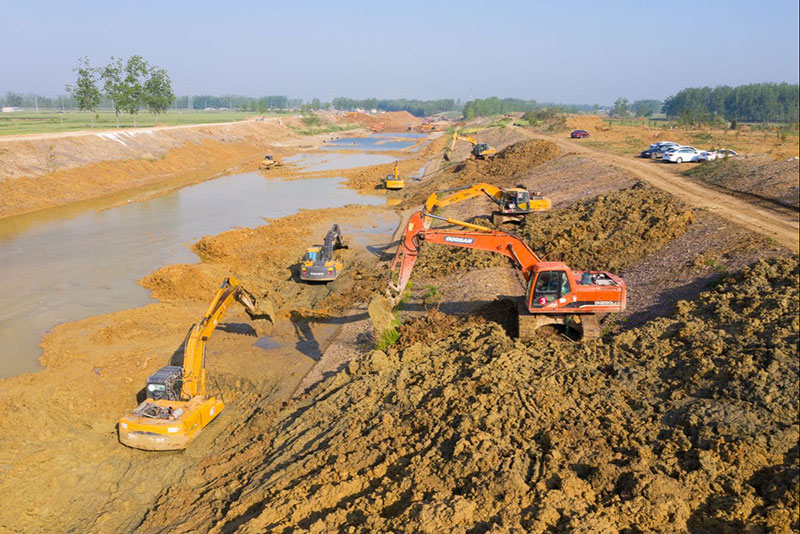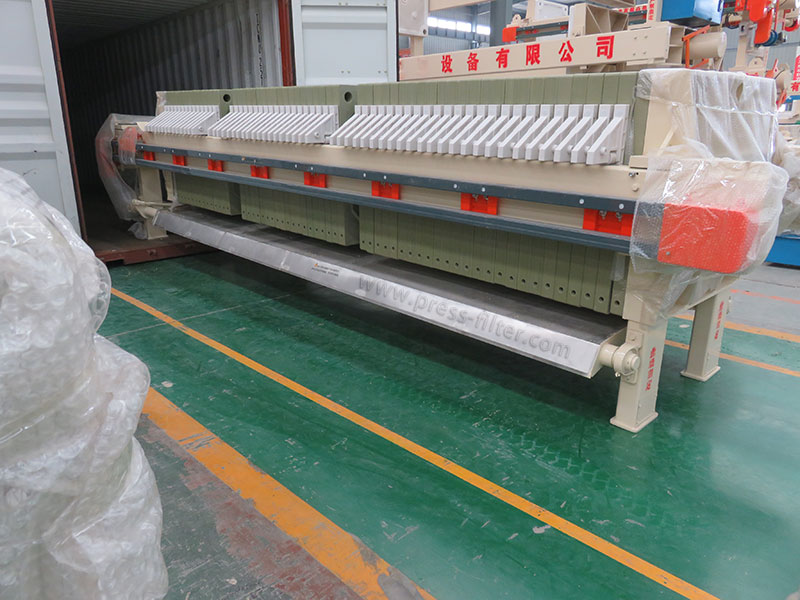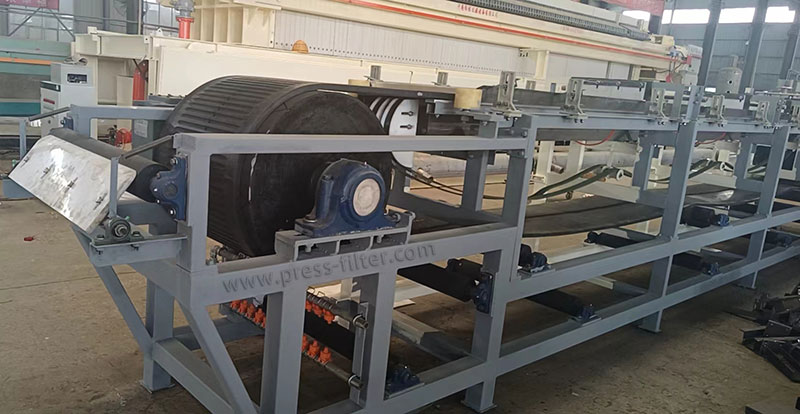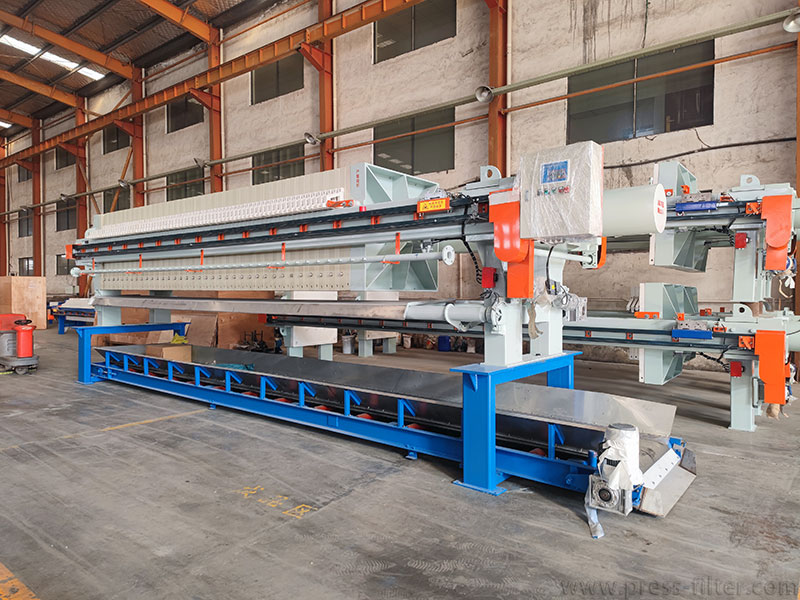Application of Membrane Filter Press in River Dredging Sediment Dehydration
With the rapid economic development in recent years, problems of soil erosion and water pollution in rivers have attracted attention. According to relevant statistics, approximately hundreds of millions of tons of sediment are deposited in natural or artificial water bodies every year. In addition, with the rapid development of industrialization, industrial wastewater, and domestic sewage are discharged into rivers. The sedimentation of sediment and pollutants entering the rivers will seriously weaken the self-purification function of natural water bodies and even cause the water bodies to lose their basic functions.
Therefore, comprehensive river improvement projects It has become a research hotspot in environmental protection, of which contaminated sediment treatment and disposal projects are an important part. The filter press plays a very important role in this aspect. This article will introduce the application of membrane filter press in river dredging sludge dehydration.
Why Treat Dredged Sediment?
In recent years, the rapid development of the environmentally friendly dredging industry has resulted in the production of a large amount of dredged sediment. These dredged sediments contain many animal and plant residues, high organic matter content, and complex pollution components. At the same time, the dredged sediment is bulky and has a high moisture content, which is not conducive to subsequent storage, transportation, and disposal, so sediment dehydration is very important. Dewatering is the removal of water from sediment flocs, thereby reducing the amount of sediment requiring final disposal and reducing sediment disposal costs.

Application of Various Mechanical Equipment in Sediment Dewatering
Membrane filter press
The membrane filter press is mainly composed of a filter press plate and a diaphragm plate, which work closely together during the filter press process. In the preliminary pressing stage, the sludge pump transports the dredged sludge into the filter chamber of the filter press. These filter chambers are formed by two compressed filter plates, allowing the moisture in the sludge to be filtered out through the filter cloth. Subsequently, the diaphragm plate will be inflated or filled with water to repress the sludge in the filter chamber, thereby greatly improving the dehydration efficiency. Through secondary pressing, the membrane filter press can significantly improve the dryness of the sludge and reduce the cost of subsequent treatment or disposal. Compared with other dewatering equipment, such as centrifuges, diaphragm filter presses generally have a smaller footprint and are suitable for processing sites with limited space.

Belt filter press
After the sediment enters the overlapping working space of the filter cloth belt, the roller rotation squeezes the filter cloth from the outside to complete the mud-water separation of the sediment. When the daily sediment processing volume fluctuates greatly, it is suitable to use a belt filter press dehydrator. The belt filter press does not require complicated operations when working, has high working efficiency, and its processing capacity is second only to the plate and frame filter press. The belt filter press dehydrator can operate continuously without pressure maintaining process, so the moisture content of the finished product is usually 80% to 85%. Further research and optimization are still needed.

Centrifugal dehydrator
The core component of the centrifugal dehydrator is the centrifugal drum. After the screw conveyor sends the mud into the centrifugal dehydrator, the rotation of the centrifugal drum generates huge centrifugal force. The sediment is thrown to the inner wall of the centrifugal drum under the action of centrifugal force. The centrifugal force on the water is small, and the water precipitates from the sediment temporarily stays on the surface of the mud layer and gradually falls and flows out due to the weak adhesion to the sediment. This is achieved by the Separation of mud and water from the bottom mud. The centrifugal dehydrator will produce noise pollution when running and consume a lot of electricity. At the same time, the operator needs to have certain professional qualities. Through centrifugal dehydration, the moisture content of the sediment will drop to about 75%, and the centrifuge processing effect cannot meet the actual demand. , and frequent equipment maintenance is required.
Conclusion
To sum up, excessive sediment moisture content has become a bottleneck in sediment treatment and disposal. The moisture content of the sediment after dehydration using a membrane filter press is the lowest. By adding conditioners, the process of sediment dehydration can be greatly improved and accelerated, and the moisture content of the sediment can be reduced by comparing the advantages and disadvantages of different equipment performances of belt filter press, centrifugal dehydrator, and membrane filter press. It was found that the membrane filter press has high dehydration treatment efficiency, good dehydration effect, and is more suitable for deep dewatering of sediment.


